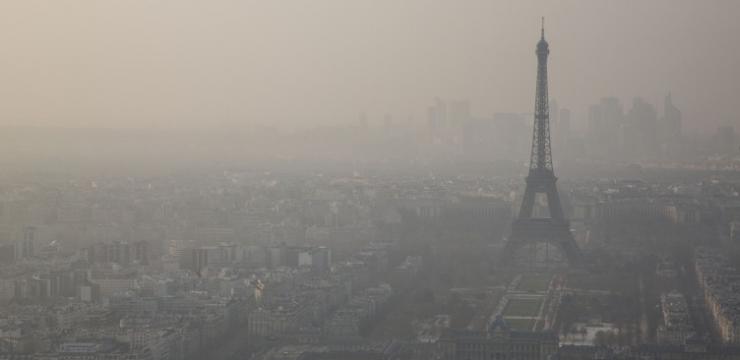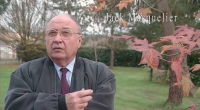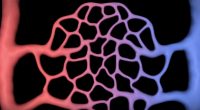
- Premature aging
- Excerpt
Hardly any other nutritional substance exerts such significant and immediate effects in so many seemingly unrelated disorders. The fact that OPCs are active in so many conditions may sound inconceivable. Those whose email boxes are full of spam about miracle drugs, cure-alls, and products that reverse aging may by now have developed a healthy skepticism, but the well characterized and well researched OPCs compounds developed by Masquelier are far removed from the snake oil category of claptrap cure-alls. The explanation for this amazing phenomenon is obvious, and is certainly not a surprise to anyone who has read this far. OPCs manifest enormously strong and varied potential at a number of key intersections in the body, multiplying the beneficial effects in a great number of conditions.
[…..]
The oxidation of lipids in the cells plays a dominant role in their aging. Consequently, it is also the root of tissue aging and the cause of the aging of the organs and of the whole body. In fact, the oxidation of unsaturated oils causes the onset of numerous different, seemingly unrelated disorders in various parts of the body. How the aging process expresses itself depends on people’s individual genetic, psychological, and physiological make-up and on environmental and nutritional circumstances. But without exaggeration, it can be claimed that free radicals are the common factor in most degenerative diseases because they attack cell membranes in every organ. Therefore, the prevention of such unchecked oxidation processes is of outstanding importance. As a tremendously potent antioxidant, OPCs successfully fight against cell aging and disease on numerous levels.
[…..]
The effect of free radicals in our body is feared primarily because they may trigger the onset of processes that eventually manifest themselves as chronic and degenerative diseases such as cardiovascular disorders, heart disease, cerebrovascular disorders, stroke, TIA, cancer, rheumatism, diabetes, hepatitis, renal failure, inflammations, allergies, high blood pressure, Down’s syndrome, cataracts, Parkinson’s and Alzheimer’s diseases, immune deficiency, and exhaustion. Most of these chronic degenerative symptoms begin to manifest themselves after an individual turns 40 years of age. At midlife, the power of the immune system begins to weaken and is no longer able to provide sufficient resistance against free radicals in the body. The balance shifts in favor of the free radicals, thus enabling them to perform their destructive attack on body tissue and blood vessels in less and less controllable ways. Even though we do not notice this process until we see symptoms appear, free radicals constantly alter and/or damage the cell membranes, DNA and genes, lipids, and proteins. In this way, they negatively influence the condition of all the cells in the body.
[…..]
The sum of the body-produced free radicals that escape the scavenging enzymes and the free radicals that are of external origin forms the common cause of the dramatic increase in so-called civilization diseases. The air we breathe and the food we eat contain traces of hundreds if not thousands of chemical substances our bodies have not encountered before. This is especially so in the urban and industrial “civilized” areas of the world where people are exposed to exhaust fumes, cigarette smoke, preservatives, flavor enhancers, synthetic sweeteners, food additives, pesticides, fertilizers, heavy metals, and more. Poisonous and unknown substances test the limits of our immune systems, which are frequently depleted by an excess of free radicals and cannot prevent the body from falling ill.
[…..]
Free radicals disturb the regular formation of collagen and interfere with the condition of the existing collagen. The result is irregular, brittle collagen that easily breaks. Thus, the aging process is accelerated and manifests itself in the loss of suppleness, resilience, and flexibility, which in turn leads to lack of motion and mobility. This kind of collagen degradation affects not only our oh-so-visible external appearance (sagging skin, wrinkles) but also our circulatory system: capillaries, arteries, veins, and lymphatic vessels — in fact, it affects every organ in the body because we find collagen everywhere. Another very delicate structure is DNA, the “hardware” on which our genetic “software” program is stored. DNA consists of highly complex compounds called nucleic acids. These nucleic acids are easily disturbed by free radicals. Thus, free radicals are able to cause damage to DNA and thus compromise the functions of a cell, not in the least the function to produce an exact replica of the original healthy cell. Chapter 31: Tumor Prevention and Cancer covers the topic in more detail. Rancid DNA is regarded as one of the causes of cancer. Also, numerous precarcinogenic molecules, harmless substances that have not yet assumed carcinogenic properties, turn dangerous under the influence of radicals and can clear the path for the onset of tumor development.
[…..]
As a special category, some substances are not so much the target of free radicals but can be excreted by the body only by way of being converted into free radicals. These can be normal substances that are introduced into the body from outside through medication or food and cannot be excreted by the organism in the usual manner. They can be compared with poor fuel, such as moist wood, that can be ignited only through the addition of very dry wood (free radicals). An example of such substances is the synthesized organic molecules frequently employed in medical treatment. Another example is alcohol, which, if excessively consumed, generates an increased number of free radicals that act as alcohol scavengers in the body cells. Alcohol belongs to the group of substances that require radical disposal. If it is consumed in moderate quantities, the liver puts an enzyme into action to perform the cleansing procedure. In the event of excessive alcohol consumption, this enzyme alone is no longer able to remove all the alcohol, and free radicals are called upon to rid the body of the excess. The majority of disorders and organic alterations attributed to alcohol are actually the consequence of the devastating effects of the free radicals that must dispose of the alcohol rather than of the alcohol itself.






